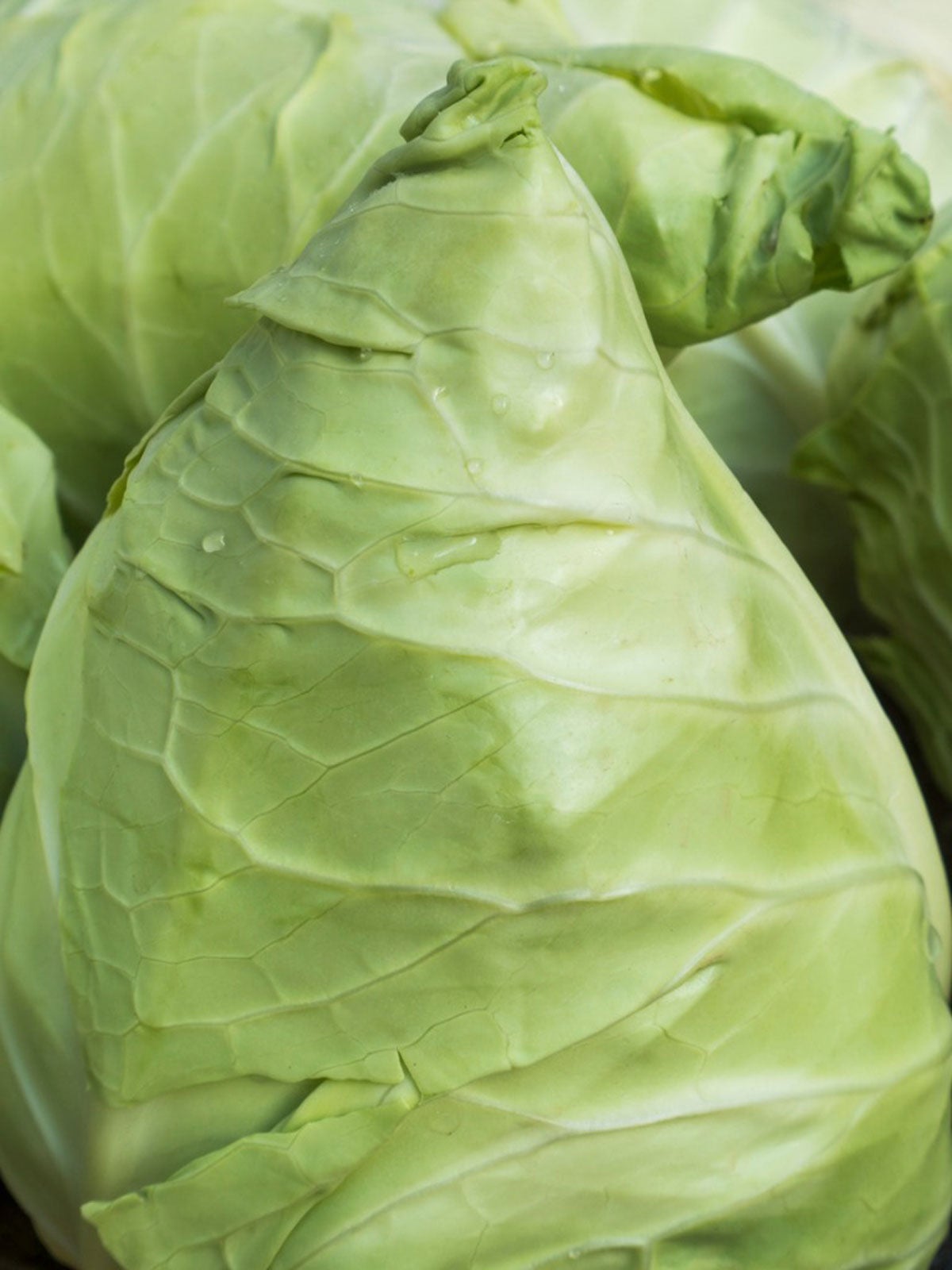What Is Caraflex Cabbage: Growing Caraflex Cabbage Heads


What is Caraflex cabbage? Caraflex hybrid cabbage is a small cabbage with an unusual, somewhat pointed shape. Mature heads weigh less than two pounds (1 kg.). A tender, crunchy cabbage with a mild flavor, Caraflex hybrid cabbage is ideal for slaws, wraps, cooked dishes, salads, and for making stuffed cabbage.
This sweeter than usual cabbage is easy to grow either by planting seeds or transplants. Keep reading to learn how.
Growing Caraflex Cabbage
Plant Caraflex cabbage seeds indoors four to six weeks ahead of the last expected frost in your region. This allows you to harvest the cabbage before the weather turns hot. Watch for Caraflex cabbage seeds to germinate in four to ten days. If you’re not interested in planting seeds indoors, you may find it easier to purchase young plants at a garden center or nursery.
You can also plant your cabbage seeds directly in the garden about three weeks before the last frost. Plant a group of three or four seeds, allowing 12 inches (30.5 cm.) between each group. If you’re planting in rows, allow approximately 24 to 36 inches of space (61-91.5 cm.) between each row. Thin to one plant per group when the seedlings have at least three or four leaves.
Before planting Caraflex (either seeds or transplants), prepare a sunny garden spot. Loosen the soil with a spade or garden fork and then dig in 2 to 4 inches (5 to 10 cm.) of compost or well-rotted manure. Additionally, dig in a dry all-purpose fertilizer according to manufacturer recommendations.
Caring for Caraflex Hybrid Cabbage
Water these hybrid cabbages as needed to keep the soil evenly moist. Don’t allow the soil to remain soggy or become completely dry, as fluctuations in moisture may cause the heads to burst or split.
Avoid overhead watering. Instead, water at the base of the plant using a drip irrigation system or soaker hose. Too much moisture on growing Caraflex cabbage may result in diseases such as black rot or powdery mildew. If possible, always water early in the day so the leaves have time to dry before evening.
Gardening tips, videos, info and more delivered right to your inbox!
Sign up for the Gardening Know How newsletter today and receive a free copy of our e-book "How to Grow Delicious Tomatoes".
Apply a light application of all-purpose garden fertilizer to growing plants about a month after they have been thinned or transplanted. Sprinkle the fertilizer along the rows and then water well.
Spread 3 to 4 inches (7.5 to 10 cm.) of mulch such as clean straw, dry grass clippings, or chopped leaves around the base of the plants to keep the soil cool and moist, and to keep weeds in check. Remove small weeds by hand or scrape the surface of the soil with a hoe. Be careful not to damage the roots of the plants.
Harvesting Caraflex Cabbages
The time for harvesting Caraflex cabbages is when the heads are plump and firm. To harvest, just cut the heads at ground level using a sharp knife. Don’t wait, the cabbage may split if left in the garden too long.

A Credentialed Garden Writer, Mary H. Dyer was with Gardening Know How in the very beginning, publishing articles as early as 2007.
-
 Terrifically Tubular Flowers For Hummingbirds: 9 Tube-Flowered Plants To Attract Hummers
Terrifically Tubular Flowers For Hummingbirds: 9 Tube-Flowered Plants To Attract HummersGrowing tubular flowers for hummingbirds helps you create the optimum feeding conditions for your winged friends. Here are nine tubed delights for hummers
By Tonya Barnett
-
 How To Grow Hydroponic Tomatoes For Fresh Indoor Harvests – No Soil Required
How To Grow Hydroponic Tomatoes For Fresh Indoor Harvests – No Soil RequiredLearning how to grow tomatoes in water is easy and allows you to harvest fresh-home-grown produce in every season without any mess.
By Ellen Wells